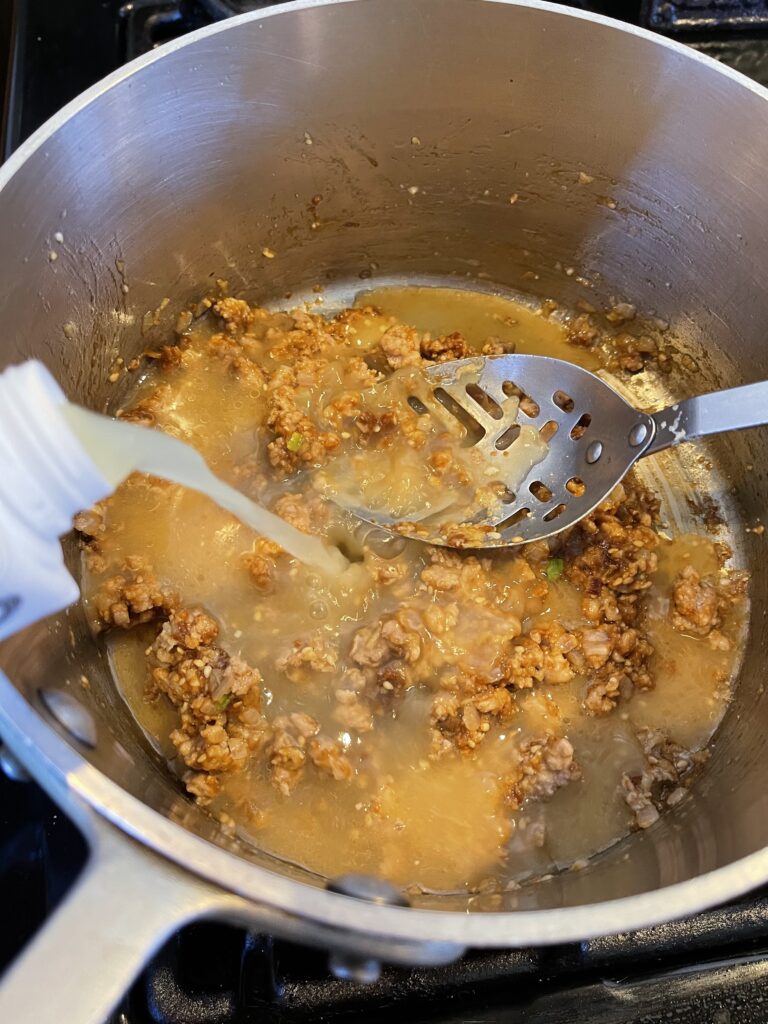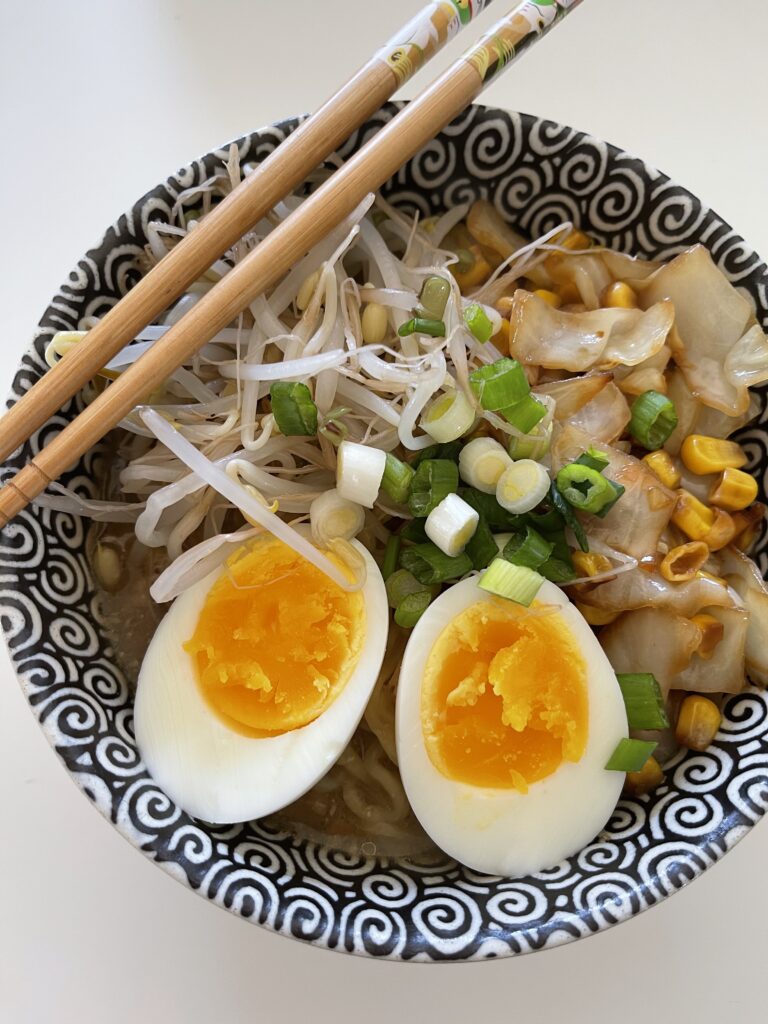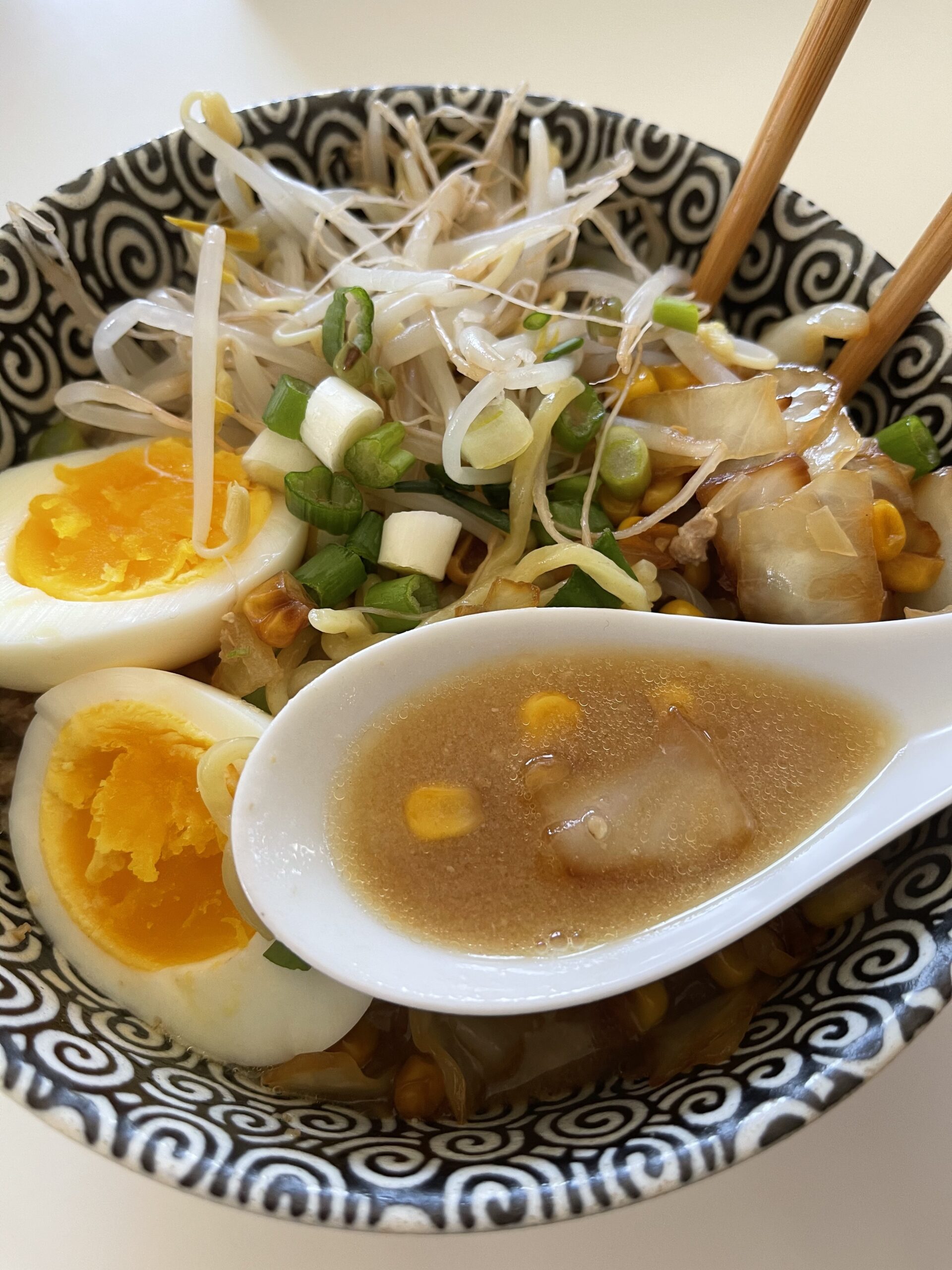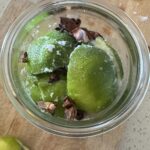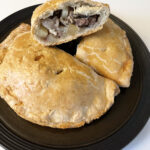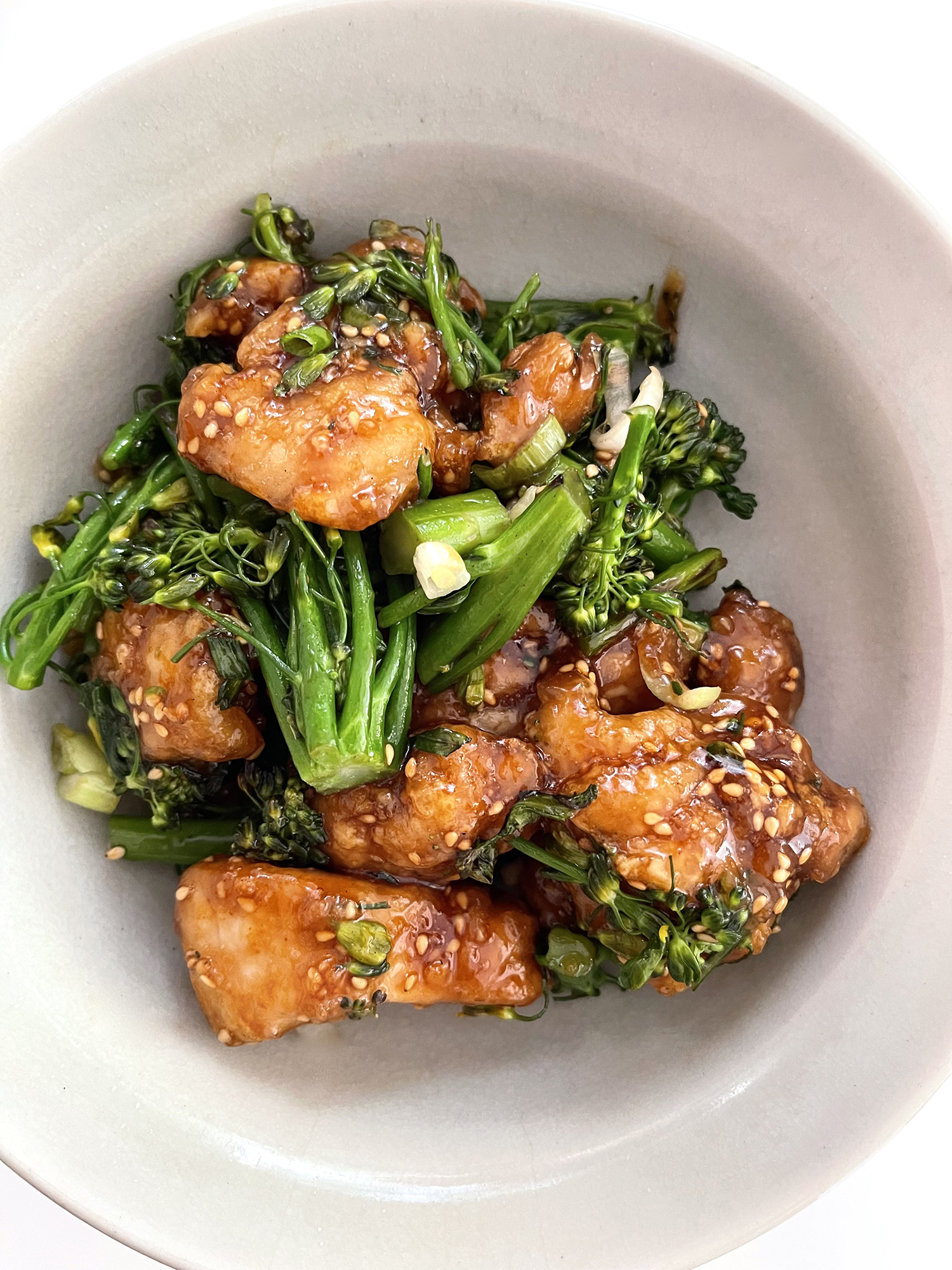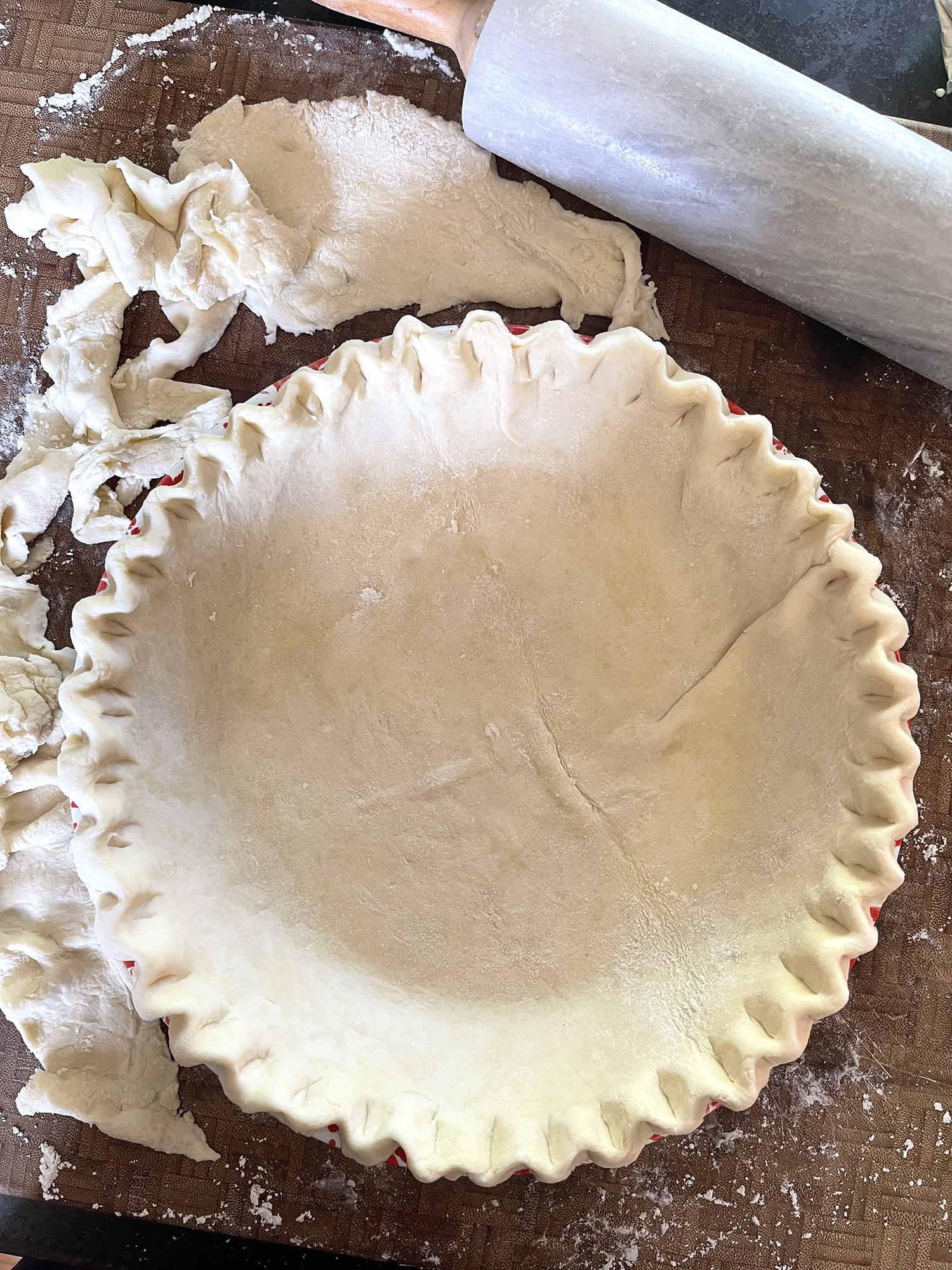Real authentic ramen is nothing like instant ramen. It’s a flavorful, filling, comforting meal. And, happily, it can be made at home. There are many styles of ramen from all over Japan. This recipe is inspired by Hokkaido’s take on the dish and is flavored with red miso and spicy go-chu-jan (fermented bean paste). Corn and cabbage are big crops in Hokkaido and are traditional toppings. You can use fresh ramen noodles (we have Nona Lim fresh noodles in the freezer section) or use one of the alternatives listed below. The recipe can also be made vegetarian by skipping the ground pork and using vegetable broth instead. If you cut the hardboiled eggs too, it will be vegan. This recipe makes two large bowls of ramen.
On the Ingredients
- Ramen noodles are a Chinese-style alkaline noodle made with wheat flour, salt, water, and kansui (sodium carbonate). The kansui gives ramen noodles their yellow color and distinct, if mild, flavor. Ramen noodles come in many lengths and may be thick, thin, or even ribbon-like, straight or wrinkled, depending on the style. They come fresh, frozen, dried, and instant. Instant ramen is precooked and air-dried or fried. If you can’t find authentic ramen noodles, you can use spaghetti noodles and cook them in water with baking soda added. It will mimic the alkaline flavor.
- Miso is a fermented soybean paste from Japan. It can also be made with barley, rice, or other ingredients. Miso has a mild sweet, salty, earthy flavor that does well with many accompaniments. There are many kinds, but the most common are Shiromiso (white miso), Akamiso (red miso), and Awasemiso (mixed miso). Miso is very healthy, with a good amount of Manganese, vitamin K, Zinc, and copper with smaller amounts of B vitamins, calcium, iron, magnesium, selenium, and phosphorus. It’s high in sodium; however, studies show that it has special compounds that may counteract the potential stomach cancer-causing effects of high-salt foods. In fact, miso may reduce the risk of several cancers, including stomach, as well as lung, colon, and breast cancers. This may be especially true for longer fermented misos, which tend to be darker and more robust in flavor. Miso is also very good for digestion and immune support. (More on the health benefits).
- Gochujang is a fermented sweet and spicy condiment from Korea. It’s made with chili, glutenous rice, soybean powder, barley malt powder, and salt. Gochujang can vary greatly in heat and even has its own heat scale called GHU (gochujang hot-taste units), ranked from 0 (mild) to 100 (Extreme hot). In flavor, gochujang is earthy and mildly sweet. It’s used in classic Korean dishes such as bibimbap and tteokbokki.
Hokkaido-Style Miso Ramen
2
servings15
minutes30
minutes45
minutesReal authentic ramen is nothing like instant ramen. It’s a flavorful, filling, comforting meal. And, happily, it can be made at home. There are many styles of ramen from all over Japan. This recipe is inspired by Hokkaido’s take on the dish and is flavored with red miso and spicy go-chu-jan (fermented bean paste). Corn and cabbage are big crops in Hokkaido and are traditional toppings. You can use fresh ramen noodles (we have Nona Lim fresh noodles in the freezer section) or use one of the alternatives listed below. The recipe can also be made vegetarian by skipping the ground pork and using vegetable broth instead. If you cut the hardboiled eggs too, it will be vegan. This recipe makes two large bowls of ramen.
Ingredients
- Broth Ingredients
1 tbsp sesame oil
2 cloves garlic (minced)
1 shallot (minced)
1-inch piece of ginger root (grated)
1 tbsp gomasio (or ground toasted sesame seeds)
1/2 lb ground pork
1 tsp gochujang
3 tbsp red miso
1 tbsp sugar or 2 tsp monk fruit sweetener
1 tbsp sake
4 cups of chicken broth (low sodium)
1/2 tsp salt or to taste
- Noodles
1 package of frozen Sun Noodle Ramen
OR 1/2 package of King Soba Buckwheat Ramen Noodles (gluten-free)
OR 2 packages of Miracle Noodles angel hair style (grain-free)
- Toppings
2 eggs (room temp)
1 cup green cabbage (roughly chopped)
3/4 cup frozen corn
1 tsp sesame oil
1 tsp soy sauce
1 cup mung beans
1 scallion (chopped)
Directions
- First, make the ramen eggs by bringing a small pot of water to a boil. Turn your eggs over so the rounded ends (not the pointier ones) are facing up, and use a clean tack or screw to prick a small hole in each. Carefully lower the eggs into the boiling water. You’ll see a stream of bubbles released from the holes.
- Cook for seven minutes, stirring them every so often to keep the yolks towards the center. Remove the eggs from the water and soak them in cold water while you assemble the ramen.
- Heat the sesame oil in a saucepan and add the ginger, shallots, and garlic. Sauté over medium heat, frequently stirring, until the ginger and garlic are fragrant.
- Add the ground pork, breaking it up with a spoon while it cooks. When the meat is no longer pink, add the gomasio, gochujang, miso, sugar, and sake. Mix it all together so the miso is no longer clumpy but evenly distributed through the pork.
- Add the chicken broth, salt to taste, and let the soup reach a simmering boil.
- Blanch the mung beans by cooking them in boiling water for a minute, then draining and rinsing with cold water to cool them completely.
- In a frying pan, sauté the cabbage and corn with soy sauce and sesame oil until the cabbage is tender. Slice the ramen eggs in half.
- Cook your chosen noodles as the package instructs. Divide the ramen into two bowls and pour the broth over them.
- Arrange the toppings attractively on top and garnish with scallions. Serve hot. Remember, it is acceptable, nay encouraged, to slurp while you each ramen.
Notes
- Nutritional Info Per serving (approx. 2 serving)
Unmodified recipe:
1216 Calories
64g Protein
50g Total Fat
129g Carbs
Recipe with sugar substitute:
1193 Calories
64g Protein
50g Total Fat
123g Carbs
